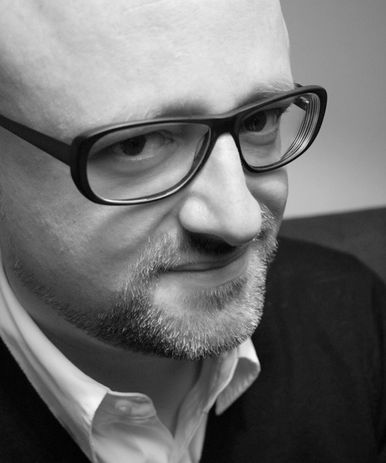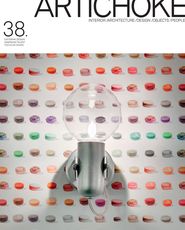
DIA national president Oliver Kratzer.
Proctologists and dentists have many things in common: they are both health professionals, they wear light blue, they use specialized equipment and they work on the same tube. Artists and designers have many things in common too: both use creativity, work from studios not offices, and draw a lot. But just like the dentist and the bum doctor, the differences are profound and you would confuse them at your peril, yet that is exactly what government and business do.
Part of the reason is historical, design having grown out of the arts and crafts during the industrial revolution. Muddying the waters today is how crafts people have rebranded themselves designer-makers, and how Design Thinking is being flogged by every ex-sustainability/innovation/management consultant.
Design’s role is shouted down, confused and diluted. As long as design is bundled with art and craft, it will never be perceived as a profitable enterprise. The peak professional design bodies have managed to survive and grow, in the DIA’s case for more than sixty-four years, without a “begging bowl” culture.
Art and design share creativity and the ability to re-frame our perceptions. Craft and design share an approach to materials, processes and humanity. Arts and crafts are the bearers of our cultural heritage, but they are not design. Design is a distinct discipline that creates wealth by making people happy. Design must stand independently and move from arts to industry.
Business and government need to understand that design is not self-indulgent, superficial, or a management fad, but a powerful discipline that enables and leverages industry. Examples of design’s real value and contribution to the economy abound, but are not heard in the right places.
As soon as design pops up in Canberra it is handballed to the Office for the Arts. Government, largely deaf and confused on the issue, has some notable exceptions, including Queensland’s Ulysses program, which comes out of the Department of Employment, Economic Development and Innovation (DEEDI) and the federally funded Creative Industries Innovation Centre (CIIC) from Enterprise Connect, which answers to the Minister for the Department of Industry, Innovation, Science and Research, who, at the time of writing, is Kim Carr.
Carr is a pretty bright bloke, but design did not feature in his “Powering Ideas” innovation agenda. Apparently innovation is restricted to men in white coats in university laboratories, something that would come as a great surprise to the venture capitalists on Sandhill Road, Silicon Valley.
The big accounting firms are getting it, positioning themselves as Design Thinkers. As preposterous as that sounds, they have the deep pockets and the ears of their c-suite clients to legitimize it. When one of the “big four” accounting firms sends a plane-load of partners to Stanford’s d-school (Institute for Design), you know they are up to something.
If innovation got design a foot in the door, then Design Thinking is throwing it open. The profession is on the threshold of getting a seat at the big table, but is failing to do so.
The biggest problem is the profession itself. It is easy to blame government and wave a fist at others, but unless we take firm charge of our own destiny we have lost the right to complain.
As a profession we are not brilliant at working together; we have problems communicating at board level and we tend to be so caught up doing the work that we forget to take a higher-level perspective. Presenting ourselves as problem solvers is like fashion designers calling themselves nudity solution providers.
Most design practitioners do not understand or value design in the bigger strategic context from their client’s perspective. I can talk to any designer in this country about colour, CAD and prototyping, but draw blank stares from most when initiating conversations about business process modelling, service and strategic design.
Not enough practising designers speak the language of business. Most of us are happy to get an engagement, do the work, get paid and be on our merry way. We fail to connect with our clients sufficiently to influence them at a strategic level.
We want our seat at the table not because we are power hungry, but because we know first-hand the incredibly positive difference an embedded design culture can make to an organization. Design and Design Thinking are the tools that will solve the wicked problems of today and tomorrow.
If practising designers continue to ignore the strategic space that has opened up, they must not be surprised if it is filled by people who misrepresent the design profession. They must not be surprised if accountants call themselves Design Thinkers, and if people making wacky chairs out of chewing gum and pubic hair call themselves “designers.”
We must expound on the value of our profession to friends, clients, contractors, writers, editors and publishers. We must support our professional bodies through membership and participation. The more clout our professional bodies have, the higher the chances of strategic commercial and political influence.















